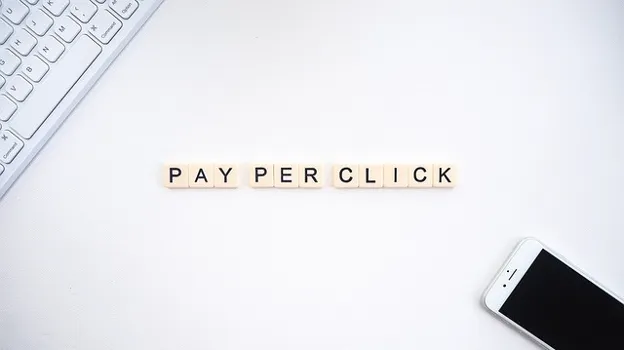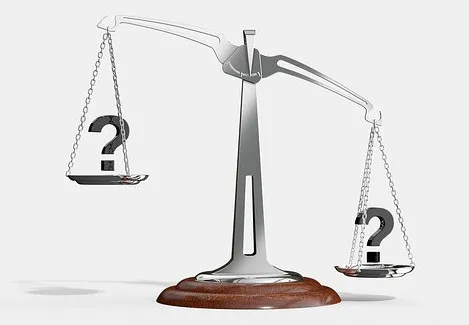SEO vs SEM Marketing: What's the Difference and Which One is Right for You?

Disclosure: Some of the links in this article may be affiliate links, which can provide compensation to me at no cost to you if you decide to purchase. This site is not intended to provide financial advice and is for entertainment only.
Picture this scenario: It’s late at night and you're managing your website. You know it needs to be seen, and you know online marketing is the way to go. But you're faced with a dilemma – should you go for Search Engine Optimization (SEO) or Search Engine Marketing (SEM)? You're not alone. This is a conundrum many marketers face daily.
Understanding SEO
In a discussion about SEO It's crucial to note that this isn't one-time setup, and you're done. It requires constant refinement and updating. Search engine algorithms are always changing, and to maintain or improve your rankings, you need to keep up with these changes. It's like a garden, if you don't tend to it regularly, weeds will start to sprout, and it won't be as vibrant as it once was.
While using Jaaxy for keyword research was extremely helpful in the beginning stages, it became clear that SEO is more than just keywords. It's about creating quality content that resonates with your audience and meets their needs. It's about ensuring your website is technically sound, with fast load times, mobile optimization, and a secure connection.
Let's take an example. One time, I noticed a particular blog post was getting less traffic. Using Jaaxy, I discovered that the keyword it was ranking for had dropped in popularity. To rectify this, I updated the blog post with more current information, used a more popular keyword, and improved the overall readability of the post. Over time, I saw the traffic for that post begin to rise again.
This continuous process of monitoring, adjusting, and improving is a cornerstone of SEO. It's slow work, indeed, but when you see your website moving up the ranks, attracting more organic traffic, the sense of accomplishment is truly gratifying. There's a certain thrill in knowing that your diligent efforts behind the scenes are leading to more visibility for your website. It's a slow climb, but the view from the top is worth it.
Understanding SEM
SEM, or Search Engine Marketing, operates on the principle of gaining visibility through paid advertisements on search engines. In contrast to SEO is a natural way to boost the rank of your website with time, SEM provides you immediate access to your intended audience. It's like buying a ticket to the front row instead of waiting in line - you get instant visibility and a guarantee that your audience will see your site before others.
For instance, when I launched a new product line on my website, I knew I needed to get it in front of potential customers fast. While my SEO efforts were ongoing, they wouldn't provide the immediate results I needed for this launch. So, I turned to SEM. I set up a PPC (Pay-Per-Click) campaign targeting keywords related to my product, including the geography and demographics of my ideal customers.
The results were almost instantaneous. As soon as the PPC campaign went live, my website was right there at the top of the search results. It was exhilarating to see. Each click was a potential customer interested in what I had to offer. While it did cost money each time someone clicked on the ad, the immediate visibility and increase in traffic were exactly what I needed for my product launch.
But this isn't to say that SEM doesn't require strategy. It’s not as simple as throwing money at a campaign and hoping it works. Effective SEM requires careful planning, ongoing testing, and regular adjustments to ensure your campaigns are reaching the right people and driving desired actions. But when executed correctly, SEM can be a powerful tool in your digital marketing arsenal, providing immediate visibility and highly targeted traffic.
SEO and SEM: A Comparison
In reality, SEO and SEM may seem to be two sides of the same coin, but they differ fundamentally in their approach and timeline. It's like the classic debate between renting and buying a house. They both give you a place to live, but the strategies and long-term results differ significantly.
Consider SEO to be akin to buying a house. It requires a substantial investment of time and resources upfront. It takes time to see results as you steadily climb up the ranks on search engines, much like making monthly mortgage payments. However, once you've achieved a high ranking, the consistent organic traffic you receive can be likened to owning a house free and clear. It’s yours to benefit from, continually, without any additional significant investment.
For example, a few years back, I decided to focus on SEO for my blog, optimizing every piece of content, enhancing the user experience, and regularly updating older posts. It took several months of consistent work before I began to see a significant uptick in organic traffic. Today, that blog continues to bring in steady traffic, leading to increased leads and sales without any ongoing expenses on my part.
SEM, on the other hand, is akin to renting a house. You get instant results - a roof over your head without waiting. However, the moment you stop paying rent (or in SEM's case, ad spend), the benefits cease. I remember when I launched a PPC campaign for a seasonal product. The ad performed well, driving traffic, and boosting sales. However, once I stopped funding the ad when the season ended, the traffic dropped.
In conclusion, SEO is about building long-term sustainability and growing organically, much like owning a house. It’s a long game. SEM is about getting quick results for a finite period, similar to renting. It’s a sprint. The best approach is often a combination of both - balancing the long-term growth of SEO with the immediate results of SEM, much like a well-diversified investment portfolio.
The Interplay between SEO and SEM
Exactly, why make it a battle between SEO and SEM when you can enjoy the benefits of both? As a marketer, I've found that integrating both SEO and SEM in my strategy works wonders, acting like two gears of the same machine that feed and amplify each other's results.
Consider SEM as your sprinter, designed to give you fast results, quick visibility, and data. When I first launched my website, I used SEM and started a Google Ads campaign. This strategy helped me gain immediate visibility in search engine results and gather valuable data about the effectiveness of different keywords. It was like jump-starting my online presence.
On the other side, SEO is your marathon runner, strategically positioned for endurance and long-term gains. While my SEM campaigns were running, I was simultaneously working on my SEO strategies—optimizing my website and content around the keywords that I found to be most effective from my SEM data. This synergy between SEO and SEM was crucial.
Over time, as my organic search rankings improved through my SEO efforts, I was able to gradually reduce my dependence on paid advertisements. My website was showing up in organic search results, the traffic was steadily increasing, and best of all, it was free. The insights from SEM played a pivotal role in shaping my SEO strategy and saving resources in the long run.
But the interplay doesn't stop there. The two can continually feed into each other. For example, SEM can be used for testing the effectiveness of keywords before incorporating them into your long-term SEO strategy. Simultaneously, the improvements in website structure and content required for SEO can also contribute to higher quality scores in your SEM campaigns, reducing the cost per click.
Therefore, the relationship between SEO and SEM is symbiotic. A balance of both ensures that you're covering all bases—reaping the immediate benefits of SEM while building your organic reach through SEO. It's like having the best of both worlds!
Is SEO or SEM Right for You?
Absolutely, the decision between SEO and SEM largely depends on your specific circumstances – the nature of your business, your marketing goals, your budget, and your timeline.
Suppose you're a startup or a small business just making your foray into the online world, or perhaps you're a blog trying to grow organically. In these cases, SEO might be a more practical choice. It's a marathon, not a sprint – it requires patience, consistent effort, but the results, though slower to come, are long-lasting. The gradual growth in organic traffic you achieve through SEO won't disappear the moment you pause your efforts. And the best part, it doesn't involve direct costs per click or impression.
But if you're launching a time-sensitive campaign, say a holiday sale, or if you need immediate visibility for your new product, SEM might serve you better. It's like putting rocket boosters on your website’s visibility. But keep in mind, the moment you stop paying for those ads, the rocket comes back to earth.
In my experience, as I was building an online presence for my website, I chose to invest in SEO while supplementing it with SEM for specific campaigns. Jaaxy was a fantastic tool during this time, aiding me in finding the right keywords for both SEO and SEM strategies.
Remember, SEO and SEM aren't mutually exclusive. A balanced approach, where you start with SEM for immediate visibility and gradually build your SEO for sustained, organic growth, can often yield the best results. But the ratio of SEO to SEM would depend on your specific needs and resources. After all, in the world of digital marketing, one-size-fits-all strategies rarely work. It's all about finding the right mix that works for you.
Conclusion
In conclusion, both SEO and SEM are integral components of your digital marketing strategy. They each have their unique strengths and advantages. SEO offers a cost-effective, long-term solution for consistent organic traffic, while SEM provides immediate visibility, albeit at a cost.
In my personal journey with my website, I've experienced the advantages and challenges of both. SEO, like planting a seed, requires patience and regular nurturing. The results don't show up immediately, but once they do, they're long-lasting and often snowball over time. On the other hand, SEM acted as my growth accelerator, bringing immediate visibility and traffic. But this growth was directly tied to my ad spend.
The key is to understand that SEO and SEM are not opposing strategies, but rather, they are complementary. A strong digital marketing approach employs both these strategies in harmony. SEO lays the groundwork for long-term, sustainable growth, while SEM can be used tactically for immediate wins or specific campaigns.
Remember, the decision between SEO and SEM isn't a binary one. It's not about choosing one over the other but finding the right balance that suits your business's unique needs, goals, and circumstances. And as you navigate this journey, tools like Jaaxy can be a great ally, helping you optimize your SEO and SEM efforts for maximum impact.
The landscape of digital marketing is constantly evolving, but one thing remains constant – the need for visibility. Whether you choose to tread the slow and steady path of SEO, the fast-paced route of SEM, or a combination of both, the ultimate goal is to reach your audience effectively. Here's to your success in your SEO and SEM endeavors!
Disclosure: Some of the links in this article may be affiliate links, which can provide compensation to me at no cost to you if you decide to purchase. This site is not intended to provide financial advice and is for entertainment only.





